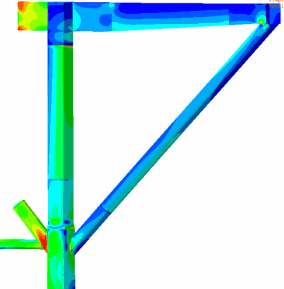
Northern Seas Technologies, Ltd
Asset Integrity Management

AIM Purposes
Asset Integrity can be defined as the ability of an asset to perform its required function effectively and efficiently whilst protecting health, safety and the environment. Asset integrity management is the means of ensuring that the people, systems, processes and resources that deliver integrity are in place, in use and will perform when required over the whole lifecycle of the asset (KP3).
We are delighted to offer our AIM services enabling our clients to maintain the reliability of their assets, mitigate operational risks on assets and people, reduce downtime costs and optimise delivery of products over the lifecycle of installations.
We are a specialist in integrity management of offshore and onshore Structures, Static Equipment, Pipeline, and Storage Tanks.
Our key areas of expertise are:
-
Program Development (AIMS)
-
Fitness for Service Analysis
-
Integrity Plan Management and Execution
-
Repair and Modification Engineering and Execution
-
Manpower Supply
-
Training


Asset Integrity Manangement Systems (AIMS)
AIMS Purposes
An asset integrity management system (AIMS) allows operators, particularly those with large-scale petroleum facilities, to demonstrate that, the risks associated with equipment failure are within tolerable levels (i.e. ALARP) and plant will safely operate up to a certain period. Furthermore, AIMS is aimed to properly register and assess observed anomalies, communicate required maintenance and monitor satisfactory implementation of risk mitigation measures.
How We Can Help
NST experts have extensive experience in either development of AIMS systems from scratch or the improvement of existing systems w.r.t to the latest advances in this field, Client operational requirements and the best of industry practices which have been carried out for several major Oil & Gas operators in the North Sea. We offer development of the majority of essential documentation/services for having an efficient AIMS in place such as:
-
Consultation for formation of AIM department
-
Consultation for development of AIMS basic procedures
-
Consultation for generating Performance Standards (P.S)
-
Structural Integrity Management (SIM) procedures
-
Pipeline Integrity Management (PIM) procedures
-
Mechanical Integrity Management procedures
-
Document Management and Control
-
Inspection, Maintenance, Testing and Monitoring procedures
-
Training courses
-
Audit





Structural Integrity Management
Aging Installations
The ageing infrastructure of offshore installations presents the industry with a constant and growing challenge. Ageing is characterised by deterioration which, in the severe operational environment offshore, can be significant with serious consequences for installation integrity if not managed properly.
Structural Integrity Management
Structural Integrity Management (SIM) program aims to maintain and demonstrate the fitness-for-purpose of existing assets, besides, identifying any pattern associated with aging. NST has an extensive experience of provision of SIM services for world's leading international oil and gas companies such as BP, ESSO, Talisman, Chevron, Total-ABK, etc. SIM’s guidelines and standards are under development. Therefore, NST tends to follow the trend of code changes and use the latest edition of standards.
Risk Based Assessment
Our SIM services cover integrity management of ageing installations for life extension, studying the cause and effect of degradation processes, reassessing the response of the structure in the aged condition and an implementation strategy to deal with the increasing risk of failure with time which enables the greater likelihood of deterioration to be predicted, detected and assessed (Risk Based Assessment).
Advanced Re-Assessments
Very often, it has been seen that aged installations fail to satisfy the requirements of the current design standards. This is preliminary due to;
-
New standards are more strict and introduce new loading criteria which were not predicted at original design stage.
-
Overall performance of the installations are degraded due to ageing
-
New revision of metocean data
-
Addition of extra loads during service life
-
Subsidence
-
Etc.
In that case, it is required that the ultimate strength capacity of the structure be cautiously evaluated with respect to the ULS criteria recommended by corresponding design codes. NST offers a wide range of risk and reliability-based assessments aimed to demonstrate the suitability of structures to continue operating with respect to the latest design codes and employing the latest world-class analytical methods. We offer the following advanced analyses for structures;
-
Non-linear pushover analysis
-
Non-linear ship impact analysis
-
CFD wave-in-deck
-
Dynamic inplace analysis
-
Fatigue analysis
-
Non-linear finite element analysis
-
Metocean data refinement
-
etc
Structural Modification Schemes
Some aged platforms fail to satisfy the minimum requirement of the design codes under existing loading scenarios and/or extra loads due to planned extensions. For such cases, NST has experience in renovation, strengthening and load mitigation of inadequate structures to make the platform fit-for-purpose for targeted service life. We are specialist in the following remedies;
-
Design of clamp
-
Local strengthening
-
Load mitigation scheme
-
Grout filling
-
Inserted pile
-
New member installation
-
Anchore pile
-
etc